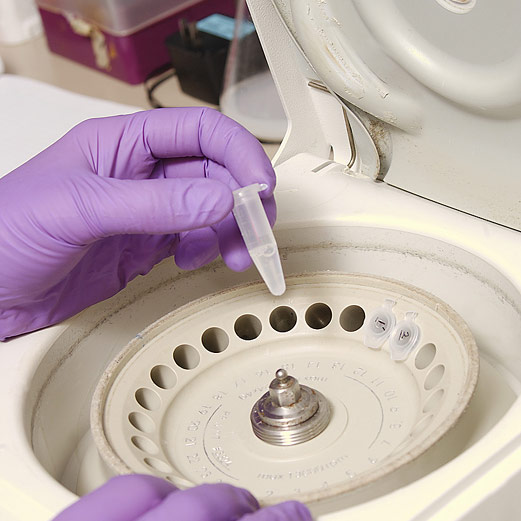
THURSDAY, Aug. 9 (HealthDay News) — Researchers report that they have created a device able to short-circuit epileptic seizures in rats.
Similar in design to an implantable defibrillator, the device is placed in the brain and reacts only when a seizure starts to occur, essentially aborting the seizure’s electrical activity.
The self-adjusting device electrically stimulates the brain at the beginning of a short but frequent type of seizure in rats, and then automatically shuts itself off. The research was published in the Aug. 10 issue of the journal Science.
“It works like a ping-pong game,” explained study author Dr. Gyorgy Buzsaki, a professor of neural science at New York University. “Every time a ball is coming your way, you apply an interfering pattern to whack it away.”
Epilepsy is a brain disorder in which a person has repeated seizures over time. It affects nearly 3 million Americans, according to the Epilepsy Foundation, making it the third most common neurological disorder in the United States, after Alzheimer’s and stroke.
People with epilepsy can suffer from two different kinds of seizures: petit mal seizures, which last for just a few seconds but can occur frequently, and grand mal seizures, which are rare but involve violent muscle contractions and a loss of consciousness.
Seizures are episodes of disturbed brain activity that cause changes in attention or behavior. Brain cells keep firing instead of acting in an organized way. The malfunctioning electrical system of the brain causes surges of energy that can cause unconsciousness and muscle contractions.
The researchers tested the new device against petit mal seizures in rats because this type of seizure occurs hundreds of times a day. The sheer volume of the seizures allowed the scientists to effectively test the system they designed. People with petit mal seizures are typically treated effectively with drugs, so the device would not be used to treat that type of seizure.
In what Buzsaki describes as a simple, closed-loop system, the firing of brain neurons creates a spike in neurological activity that is followed by a wave and detected by the device, which fires back only when necessary. The system, called transcranial electrical stimulation, leaves other aspects of brain function unaffected. “The system doesn’t prevent seizures, it just treats them right away,” said Buzsaki. The stimulation reduced the length of a seizure by about 60 percent.
In humans, two plates about the size of a pocket watch could be placed in the skull in a position designed to target the affected area of the brain. The electrodes would be powered by ultralight electrical circuits implanted in the skull, Buzsaki explained.
The goal is to apply the system that worked in rats to people with complex partial seizures — epileptic seizures that affect both sides of the brain and cause a loss of consciousness, Buzsaki said. Although the device worked in rats, the results may not translate to humans.
This type of seizure also can occur with head injuries, brain infection and stroke. The cause is typically unknown.
In 20 percent to 40 percent of people who have complex partial seizures, drugs are ineffective and there are no remedies, Buzsaki said. “It’s not clear what kind of stimulation to deliver and where exactly in the brain the stimulation should go,” he explained.
Dr. Orrin Devinsky, director of the epilepsy program at New York University, said the research has enormous potential for treating epilepsy and other neurological problems. “What’s unique about this technique is that it’s a sophisticated way to identify the rhythmicity of the seizure itself and interrupt the cycle with precision,” he said. “Existing [deep brain stimulation] devices don’t finesse the timing this way.”
Devinsky, who was not associated with the study, said the research could potentially be applicable to people with tremors, Parkinson’s disease and even those with serious depression and other psychological disorders.
More information
The Epilepsy Foundation has more on epilepsy.

